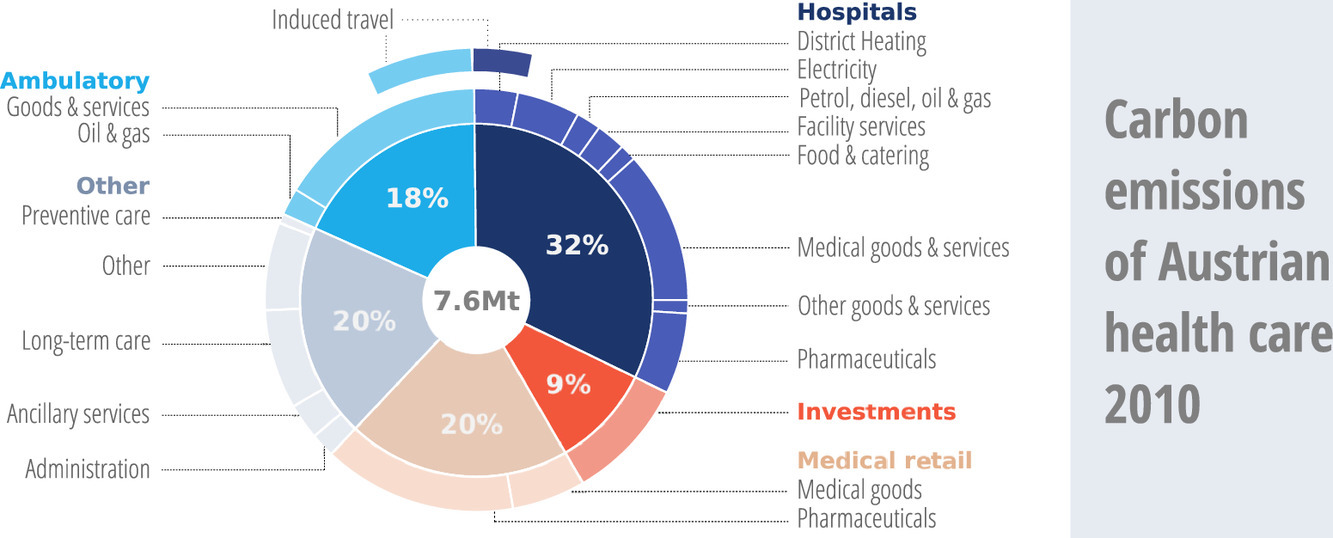Das Gesundheitssystem steht vor einer doppelten Herausforderung: die gesundheitlichen Folgen des Klimawandels abzufedern und selbst keinen zu großen klimarelevanten CO2-Fußabdruck zu hinterlassen. Eine Studie zeigt bislang ungenützte Potenziale auf und skizziert in sechs Schritten den Weg zu einer nachhaltig klimafreundlicheren Gesundheitsversorgung.
Eine Gruppe von Forscherinnen und Forschern der Universität für Bodenkultur Wien, des Potsdam-Instituts für Klimafolgenforschung und der Gesundheit Österreich (GÖG) legte nun in der Studie „HealthFootprint“ erstmals Zahlen für den CO2-Fußabdruck des österreichischen Gesundheitssystems vor. In der Studie werden die klimarelevantesten Bereiche der Gesundheitsversorgung identifiziert und zentrale Ansatzpunkte für den Klimaschutz im Gesundheitswesen aufgezeigt.
Abstract:
Health care is one of the largest and fastest growing service sectors in OECD countries and a significant contributor to climate change. Health care is also indispensable for human well-being. It is therefore crucial to understand how the health care sector can reduce its emissions without undermining its service quality. We break down the carbon emissions of Austrian health care in unprecedented detail over a decade starting in 2005. We calculated the carbon footprints of Austrian health care providers and further decomposed the emissions attributable to hospitals, the largest health care provider in Austria. We estimated detailed life cycle assessments of the carbon emissions attributable to energy use, the use of selected pharmaceuticals and medical goods and induced private travel.

The Austrian health carbon footprint amounted to 6.8 million tons of CO2 in 2014, a decline of 14% since 2005, mainly due to the rising shares of renewables in the Austrian energy sector. Complementary calculations of the carbon emissions from energy use by Austrian health care providers confirm this finding. Goods purchased by hospitals, pharmaceuticals and other medical non-durables stand out as especially large contributors to the health carbon footprint. Carbon emissions attributable to induced travel increased by 15%, indicating the need to better align planning of health care provision with transport and spatial planning. Concluding, we argue that many untapped possibilities for reducing the carbon footprint of health care exist and propose six concrete steps towards sustainable health care that are applicable to most industrial countries.




